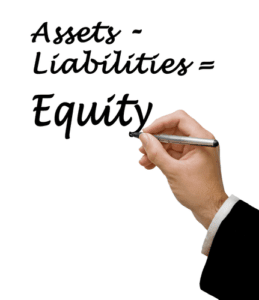Medication for Alcoholism Treatment: A Short Roundup
April 21, 2021Maverick House Fresh Seafood Restaurant in Milwaukee, WI
August 30, 2021Accounts Receivable AR: Definition, Uses, and Examples

At the end of the three months, the note, with interest, is completely paid off. As mentioned earlier, if Anchor used IFRS the $480 discount amount would be amortized using the effective interest method. If Anchor used ASPE, there would be a choice between the effective interest method is a note receivable a current asset and the straight-line method.
Are the Accounts Receivable Current or Non-assets?
He has been the CFO or controller of both small and medium sized companies and has run small businesses of his own. He has been a manager and an auditor with Deloitte, a big 4 accountancy firm, and holds a degree from Loughborough University. This includes products that are sold for cash as well as resources that are consumed, used, or exhausted through regular business operations that are expected to provide a cash value return within a single year. It is also possible that some receivables are not expected to be collected on. This consideration is reflected in the Allowance for Doubtful Accounts, a sub-account whose value is subtracted from the Accounts Receivable account. On March 31 a similar entry will be made to record the interest revenue earned in March.
- (a)”One year after date, I promise to pay…” When the maturity is expressed in years, the note matures on the same day of the same month as the date of the note in the year of maturity.
- Property, plants, buildings, facilities, equipment, and other illiquid investments are all examples of non-current assets because they can take a significant amount of time to sell.
- This schedule helps in evaluating the timing of cash inflows and the potential need for additional liquidity sources if collections are delayed.
- Notes receivable are assets and represent amounts due to a business by a third party (usually a customer).
- There are many reasons why a business might have notes receivable in its accounting records.
- The difference between a short-term note and a long-term note is the length of time to maturity.
Get in Touch With a Financial Advisor
- For the past 52 years, Harold Averkamp (CPA, MBA) has worked as an accounting supervisor, manager, consultant, university instructor, and innovator in teaching accounting online.
- The carrying amount of the note may be adjusted for amortization of discounts or premiums, and for any allowance for credit losses.
- We may earn a commission when you click on a link or make a purchase through the links on our site.
- When you’re a Pro, you’re able to pick up tax filing, consultation, and bookkeeping jobs on our platform while maintaining your flexibility.
- Note Receivable is credited because it is no longer valid and its balance must be set back to zero.
- These multiple measures assess the company’s ability to pay outstanding debts and cover liabilities and expenses without liquidating its fixed assets.
- It means that the company can expect to receive the money from its customers within one year or less from when it was recorded as an account receivable.
On February 28 a similar entry will be made to record https://x.com/BooksTimeInc the interest revenue earned in February. Interest Receivable is increased on the debit (left) side of the account and decreased on the credit (right) side of the account. Notes Receivable is increased on the debit (left) side of the account and decreased on the credit (right) side of the account. Classification of Notes Receivables is critical for any business as it plays an essential role in managing finances efficiently while ensuring compliance with accounting standards. Square determines the amount to be charged for the loan and the percentage to be charged each day using data analytics. Each Square account has potentially different terms based on its history and trends.

What is notes receivable?

Notes receivable are initially recognized at the fair value on the date that the note is legally executed (usually upon signing). Of the many types of Current Assets accounts, three are Cash and Cash Equivalents, Marketable Securities, and Prepaid Expenses. Many companies categorize liquid investments into the Marketable Securities account, but some can be accounted for in the Other Short-Term Investments account. An example would be excess funds invested in a short-term security, putting the funds to work but keeping the option of accessing them if needed.
Notes receivable accounting
Have you ever extended credit to a customer and received a formal promise to repay in return? If so, you’re holding a note receivable, a valuable https://www.bookstime.com/ asset for your business. This article explains how notes receivable are categorized depending on their repayment timeframe.
- In any event, the Notes Receivable account is at the face, or principal, of the note.
- No interest income is recorded at the date of the issue because no interest has yet been earned.
- This means that the loan will mature in two years, and the principal and interest are due at that time.
- The implied interest rate is calculated to be 5% and the note’s interest component (rounded) is $2,165 (), which is the difference between the cash lent and the higher amount of cash repaid at maturity.
- For example, if a company holds a note that is 10% interest, this will also be reflected on the balance sheet alongside the principal amount.
Notes Receivable Disclosures

As the length of time to maturity of the note increases, the interest component becomes increasingly more significant. As a result, any notes receivable that are greater than one year to maturity are classified as long-term notes and require the use of present values to estimate their fair value at the time of issuance. After issuance, long-term notes receivable are measured at amortized cost. Determining present values requires an analysis of cash flows using interest rates and time lines, as illustrated next. When it becomes clear that a receivable won’t be paid by the customer, it has to be written off as a bad debt expense or a one-time charge. Companies might also sell this outstanding debt to a third party debt collector for a fraction of the original amount—creating what accountants refer to to as accounts receivable discounted.
Company
Journal entries for notes receivable involve recording promissory notes that a business receives from another party. Just like accounts receivable, notes receivable is a balance sheet asset account. The principal of the note receivable, the time frame or duration the maker has to pay back, and the expected collection date are reported on the balance sheet along with the note receivable.

